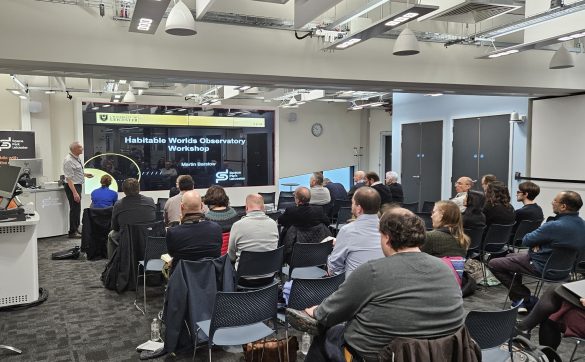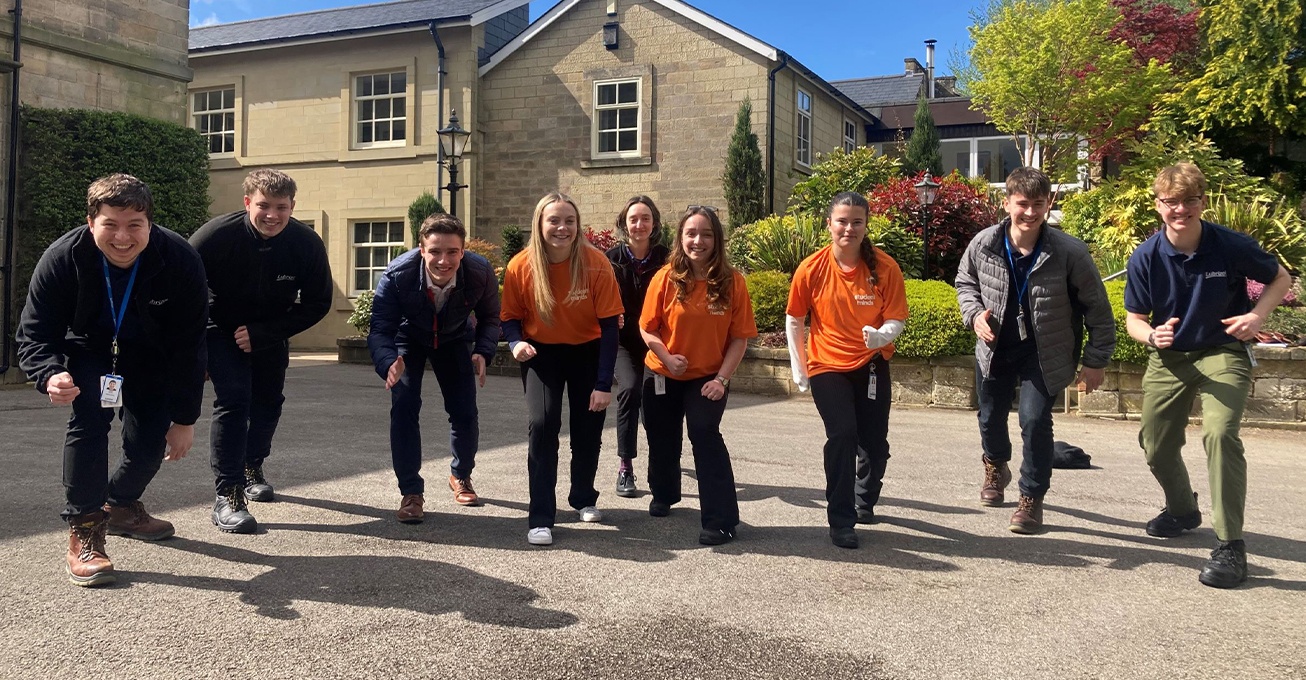 Academics and space industry leaders met at Space Park Leicester to explore the UK’s potential contributions to the recommended Habitable Worlds Observatory (HWO), NASA’s next flagship mission, in the inaugural national workshop.
Academics and space industry leaders met at Space Park Leicester to explore the UK’s potential contributions to the recommended Habitable Worlds Observatory (HWO), NASA’s next flagship mission, in the inaugural national workshop.
Scheduled for launch in the early 2040s, HWO’s development, build, and launch align with the extended timelines of ground-breaking space exploration initiatives. The current plan outlines HWO as a 6-metre aperture Ultraviolet, Optical, Infrared (UVOIR) telescope, promising revolutionary capabilities in astrophysics and planetary science.
The workshop, led by Professor Martin Barstow from Space Park Leicester and the University of Leicester, served as a platform to refine the HWO science programme, explore instrumentation needs, and foster collaboration within the UK scientific and hardware community.
Attendees, including Julie Black, Missions and Capabilities Delivery Director for Discovery and Sustainability at UK Space Agency, took part in discussions covering the background of HWO, UK activities to date, and interactive sessions aimed at generating valuable contributions.
Professor Barstow, Professor of Astrophysics and Space Science at the Department of Physics and Astronomy at the University of Leicester, said: “The Habitable Worlds Observatory (HWO) has been selected by NASA as its next flagship space astronomy mission, following on from Hubble, Webb and Roman telescopes.
“A principal scientific goal of HWO is to search for Earth-like planets in nearby interstellar space – within a few 10s of parsecs – and characterise their surfaces or atmospheres through direct spectroscopic observations in the search for evidence of life processes.”
The University of Leicester has a long record of space research, dating back more than 60 years. During that time the University’s experts have been involved in more than 20 launched missions and there has been at least one Leicester-built instrument operating in space since 1967.
Building upon the heritage and space-science excellence of the University of Leicester, Space Park is a collaborative community of industry, academics and students working together to drive growth in space and space-enabled sectors.
Professor Barstow added: “HWO will also be a general-purpose observatory able to provide revolutionary capability in many areas of astrophysics and planetary science. As with Hubble and Webb before, the timescale for development, build and launch of HWO is measured in decades, with an expected launch in the early 2040s, although it is hoped to accelerate work to bring this forward.”
Detailed design of the mission, examination of its science goals and development of instrumentation is beginning now, with key meetings already organised this year.
Professor Barstow said: “For the next few years, the emphasis on HWO development is refining the science programme and understanding the demands it makes on the instrumentation.
“In the expectation of significant UK science and hardware interests in HWO, it is important to begin an exploration of these and develop the UK community involvement in the mission.”
For more information about Space Park Leicester, visit: https://www.space-park.co.uk/ or to learn about the University of Leicester visit: https://le.ac.uk/about.






